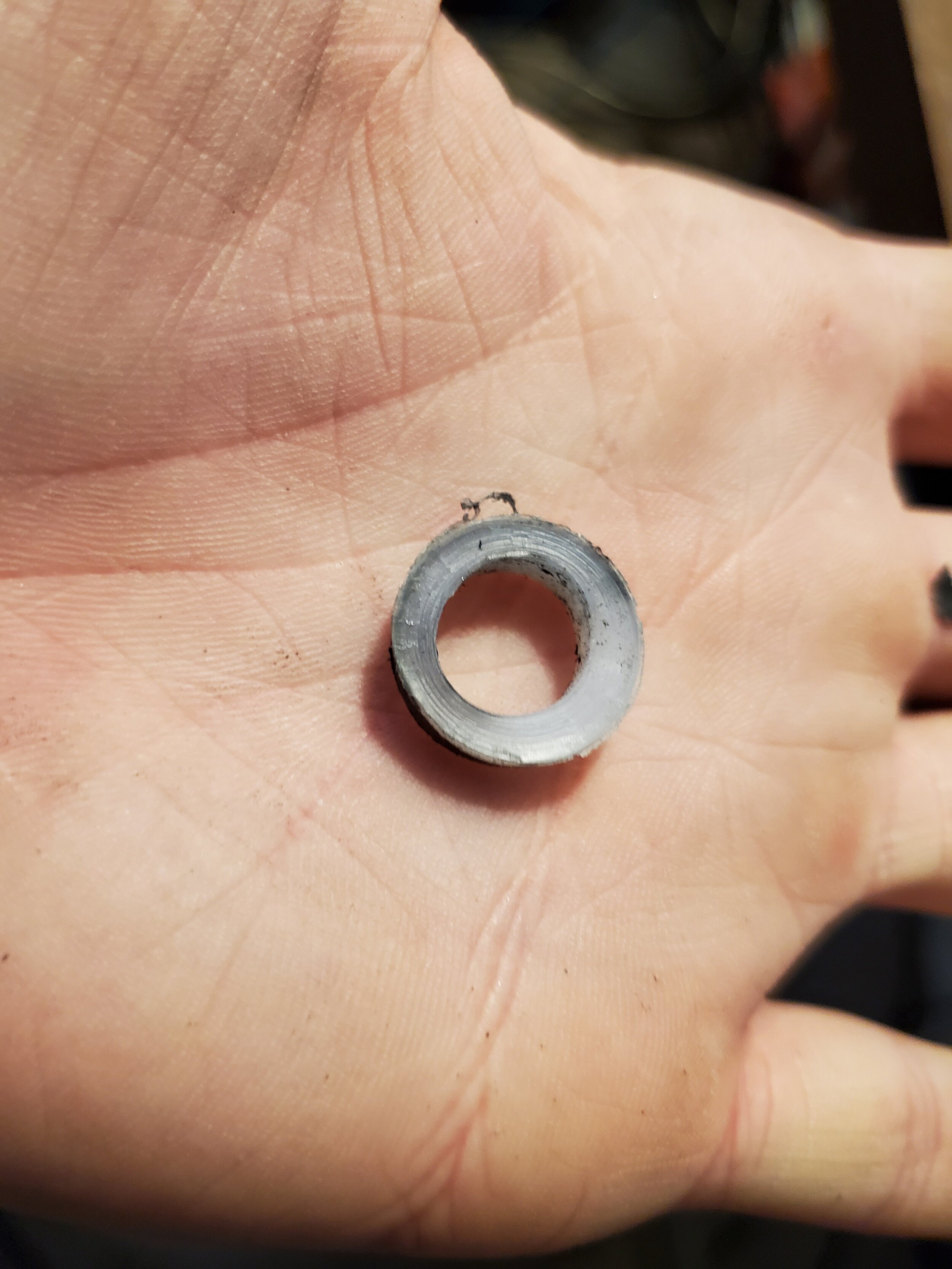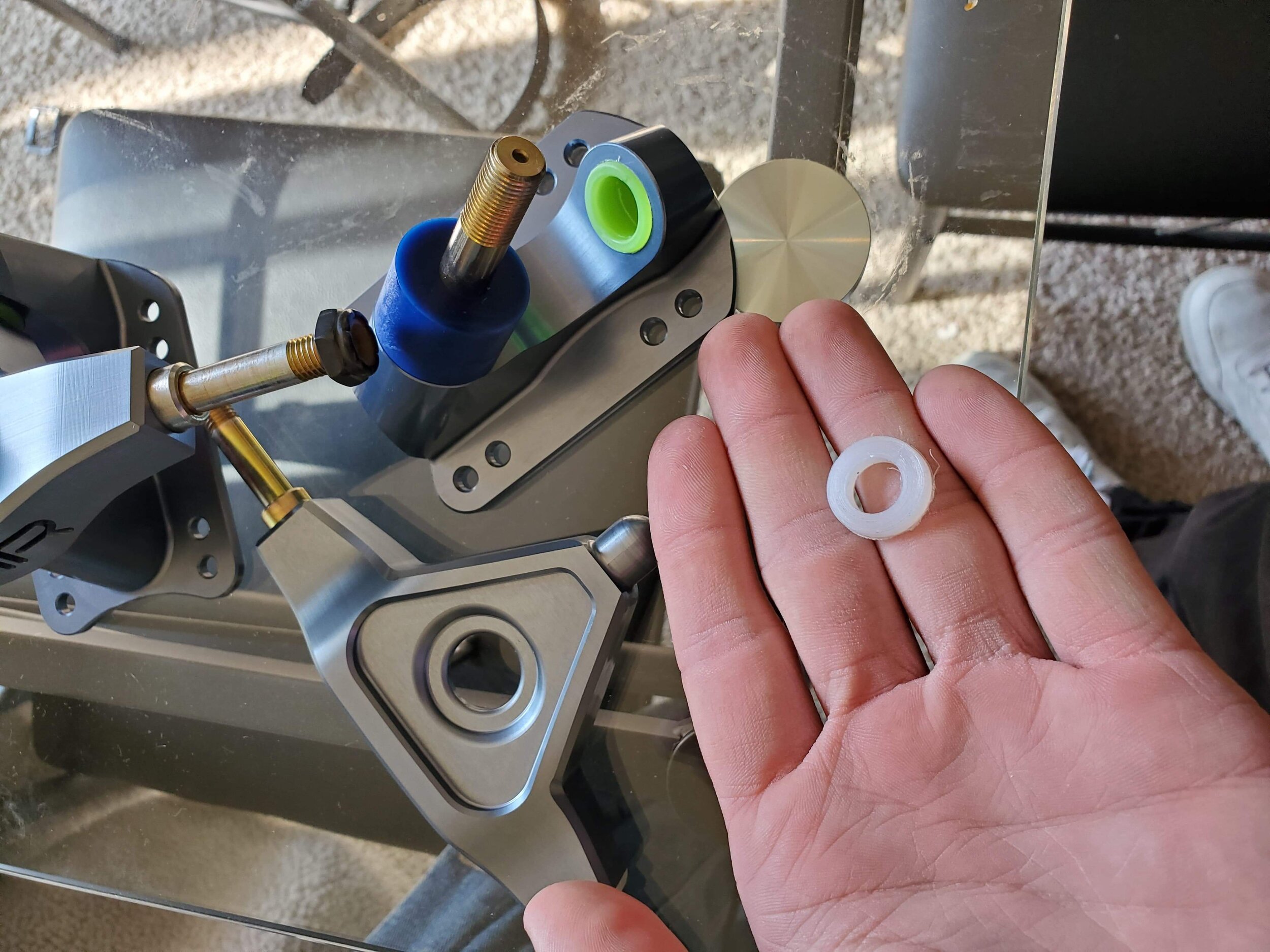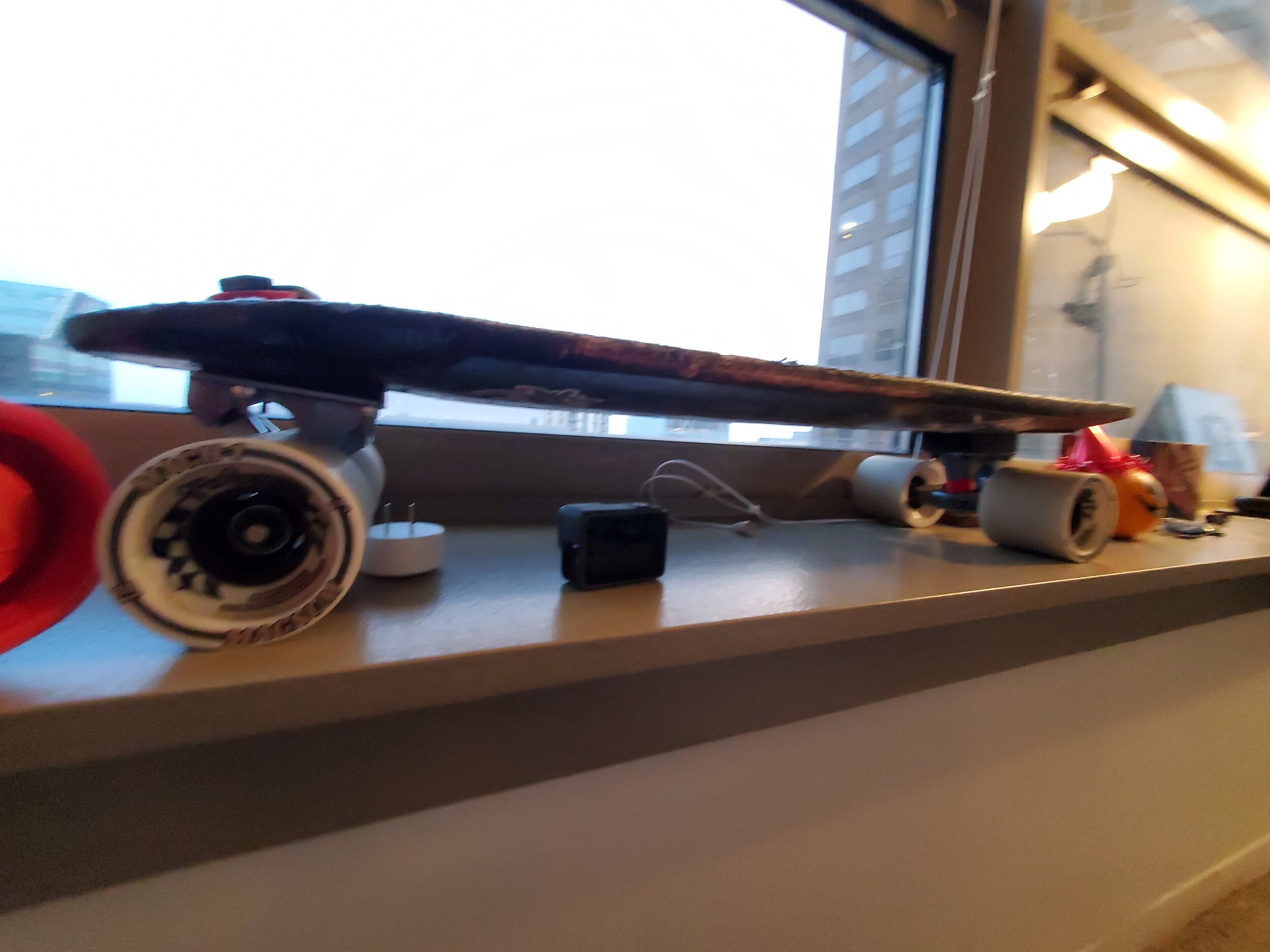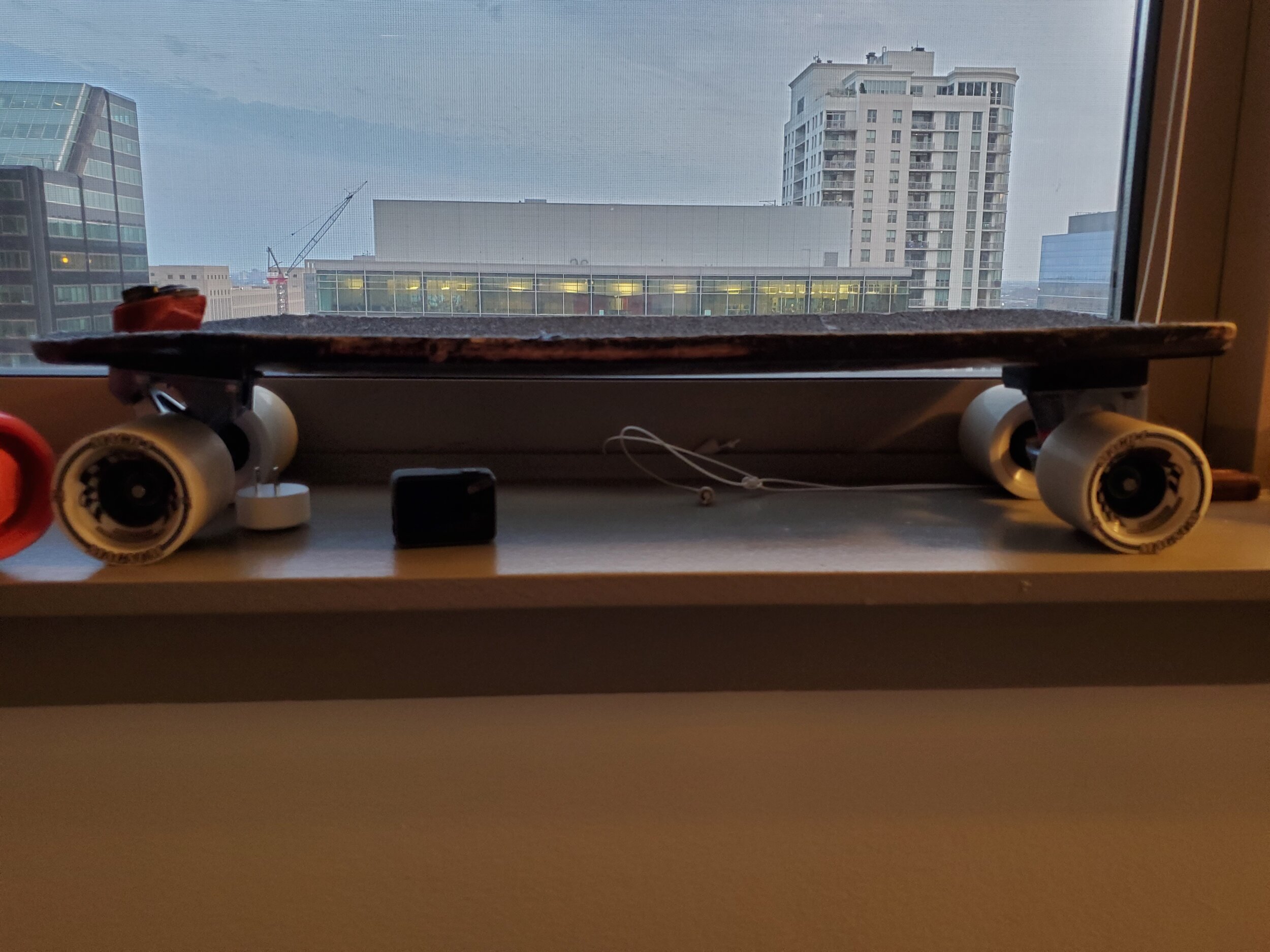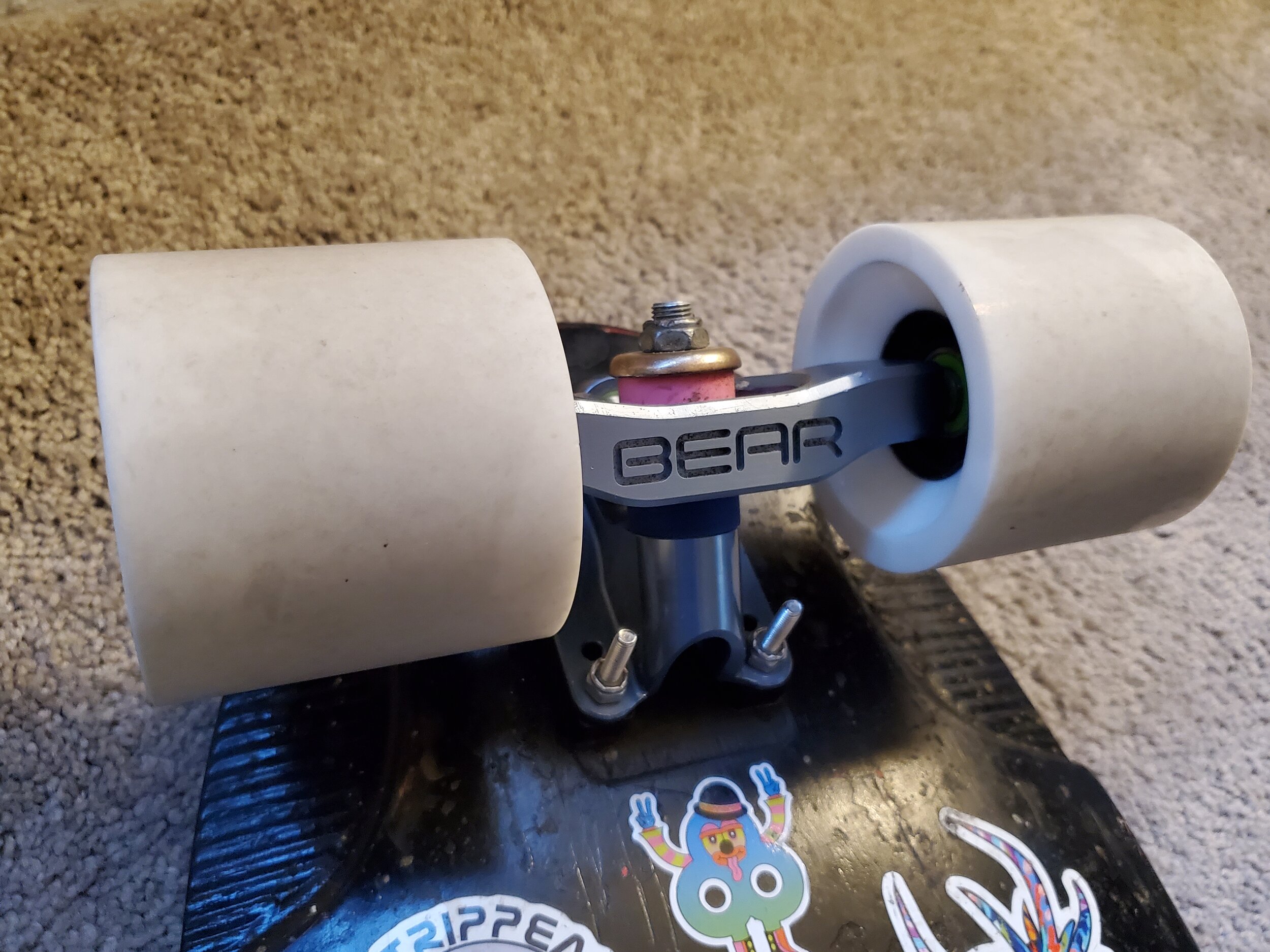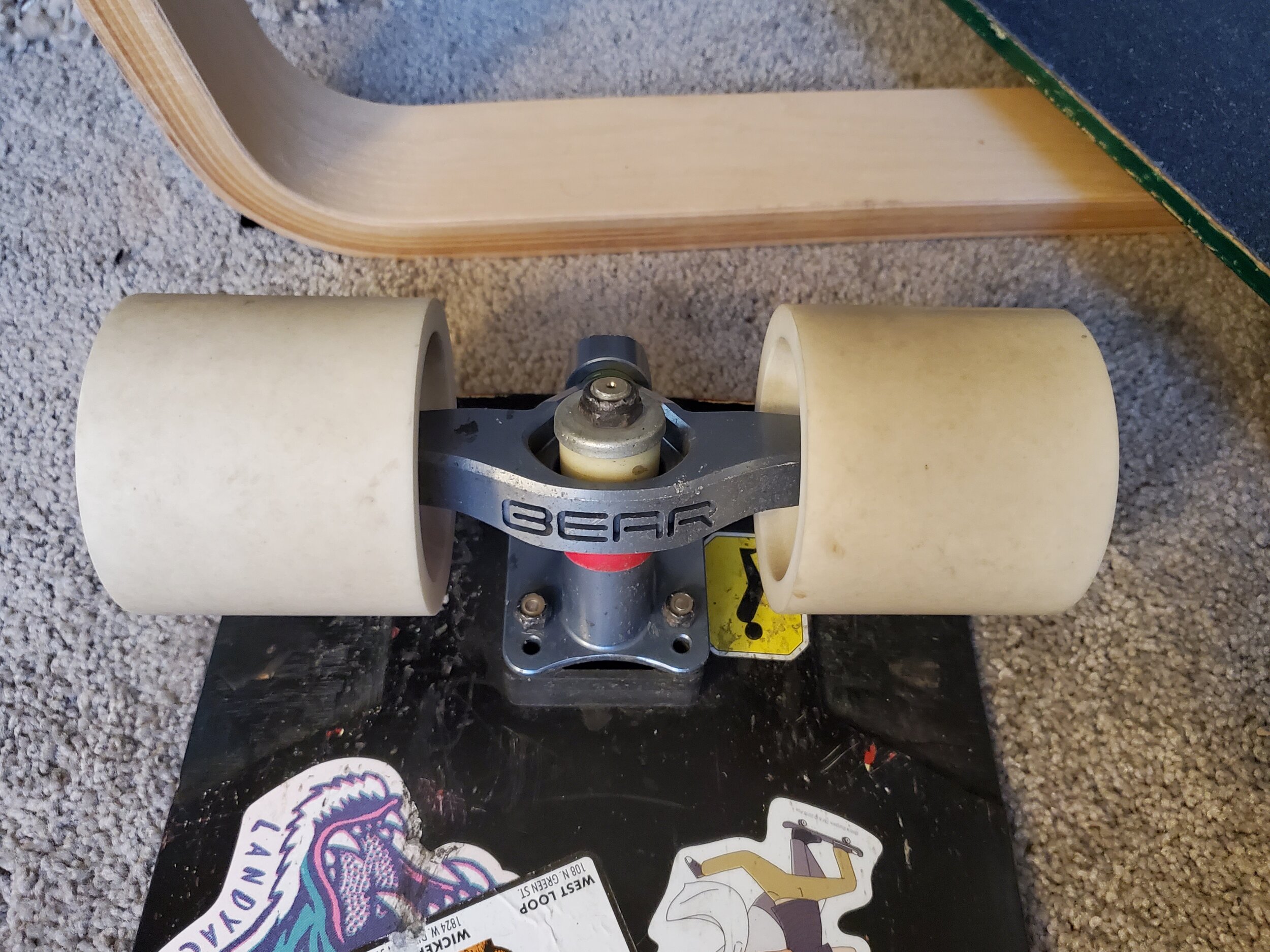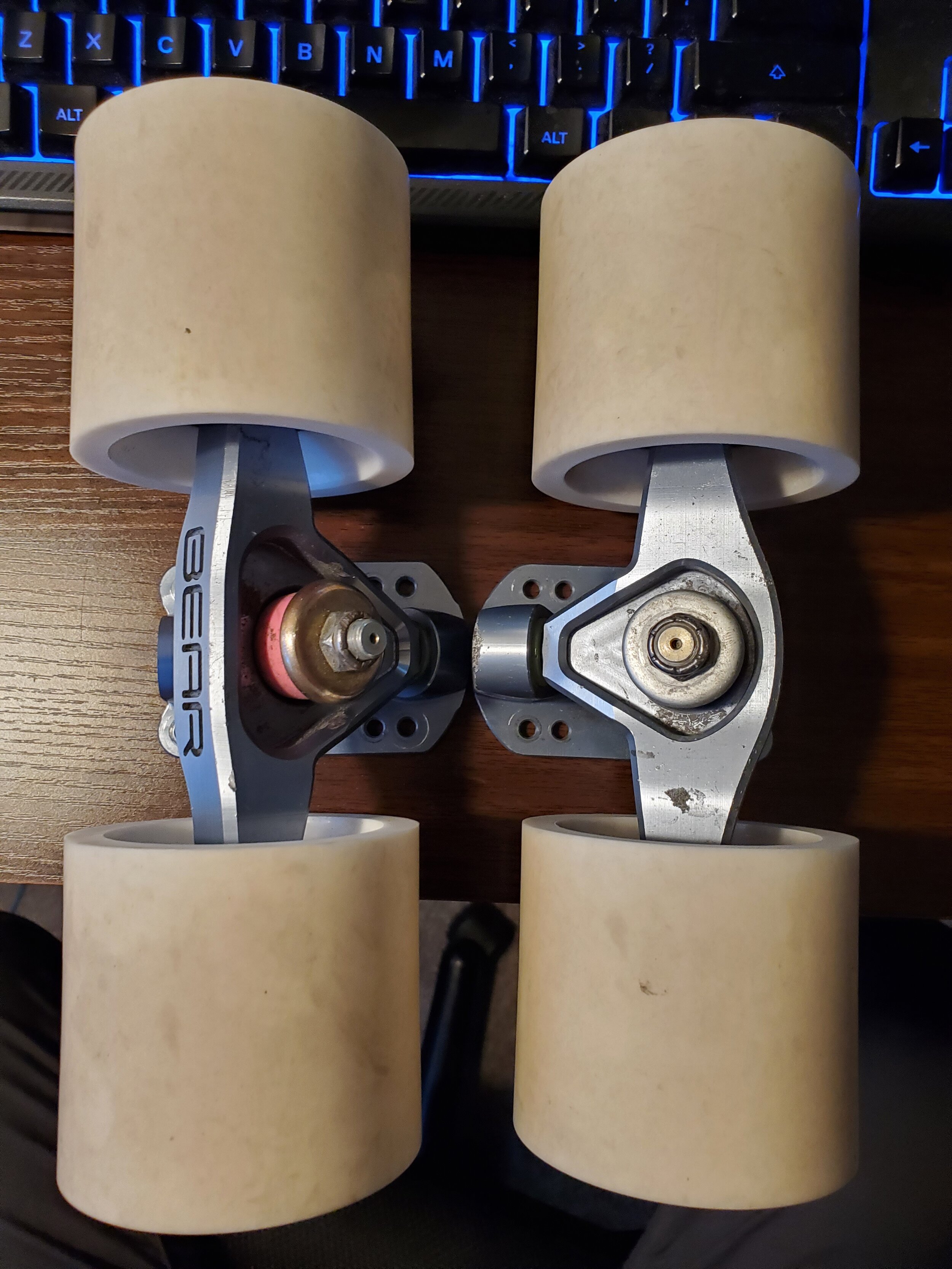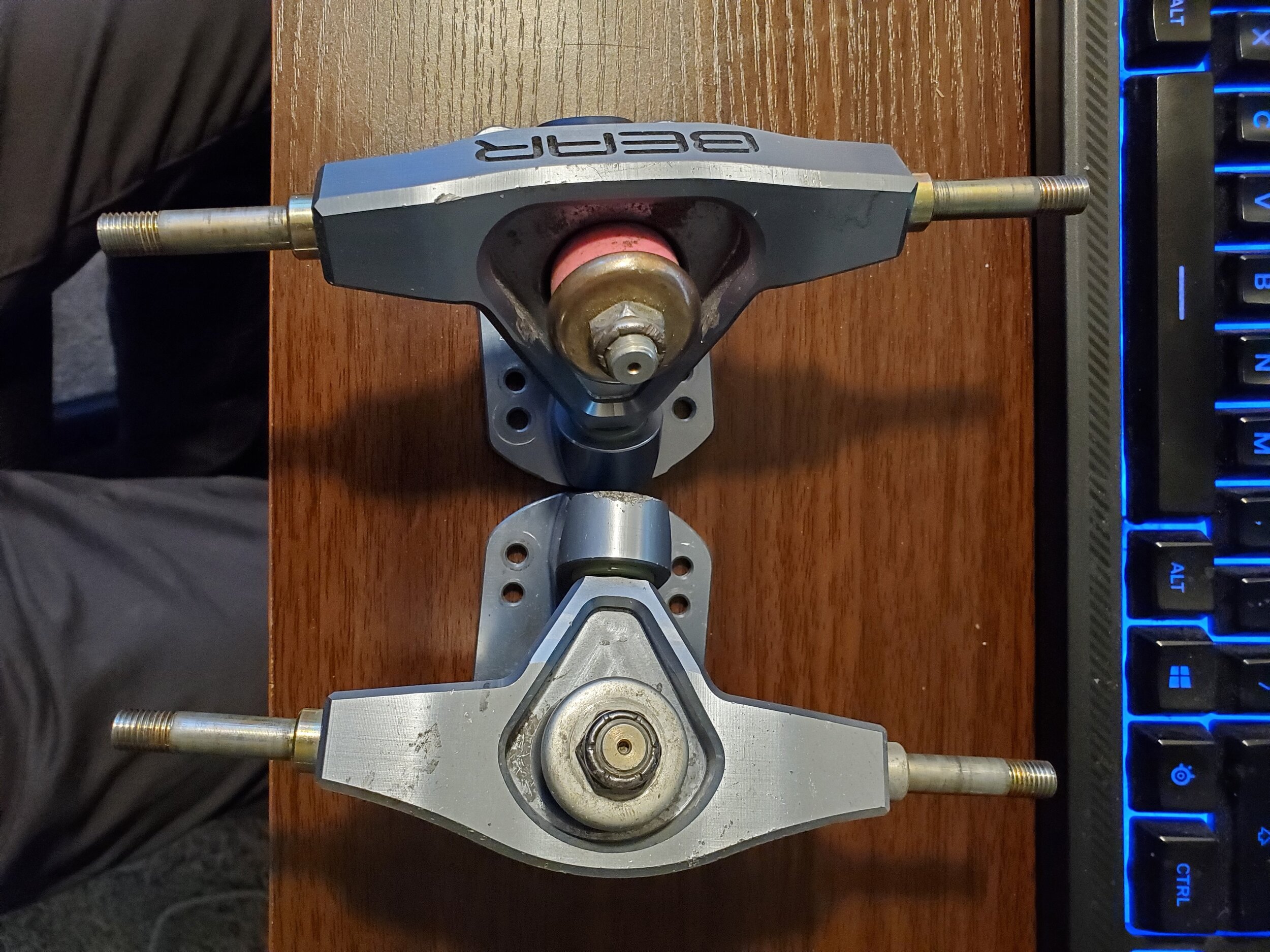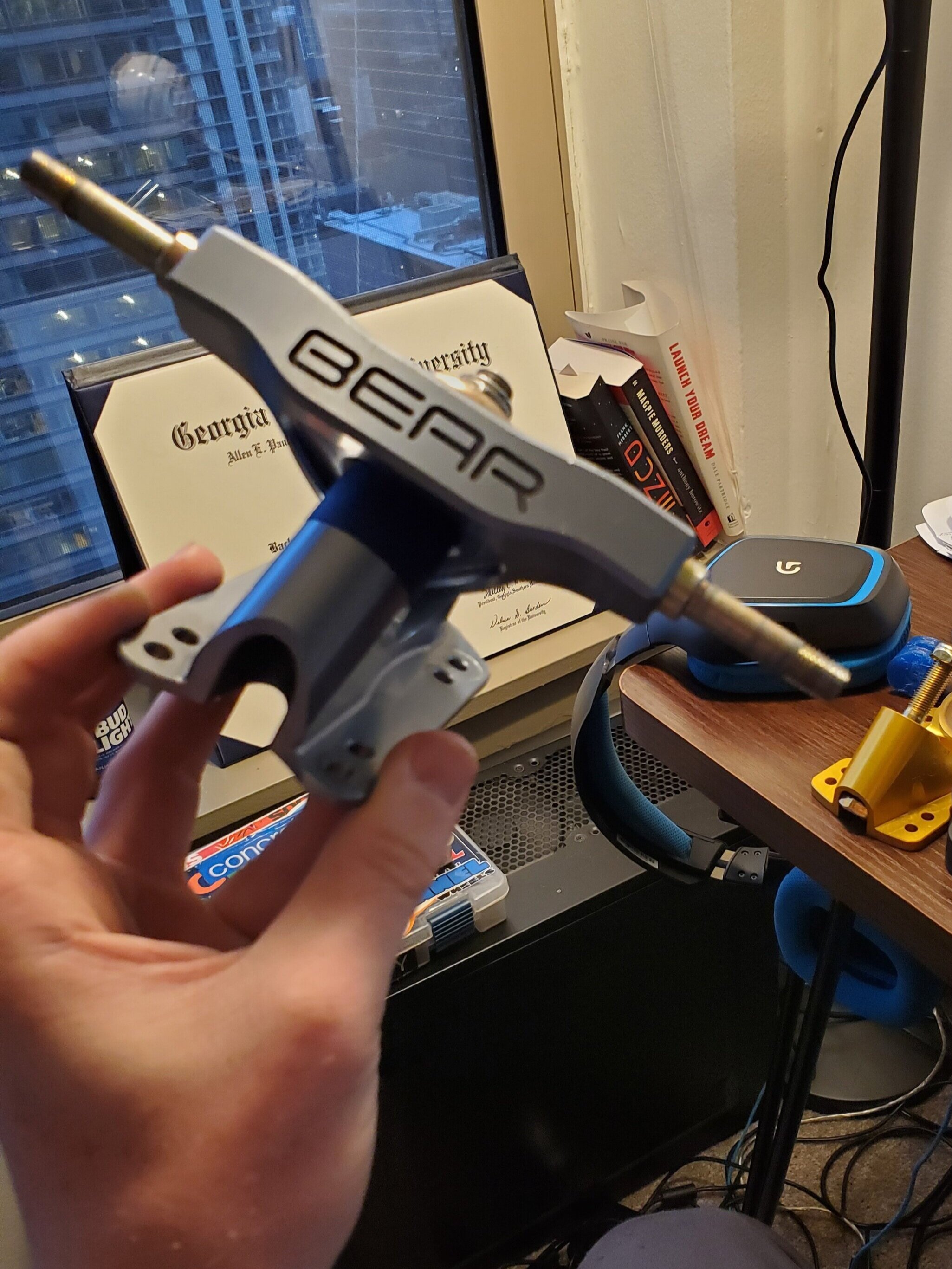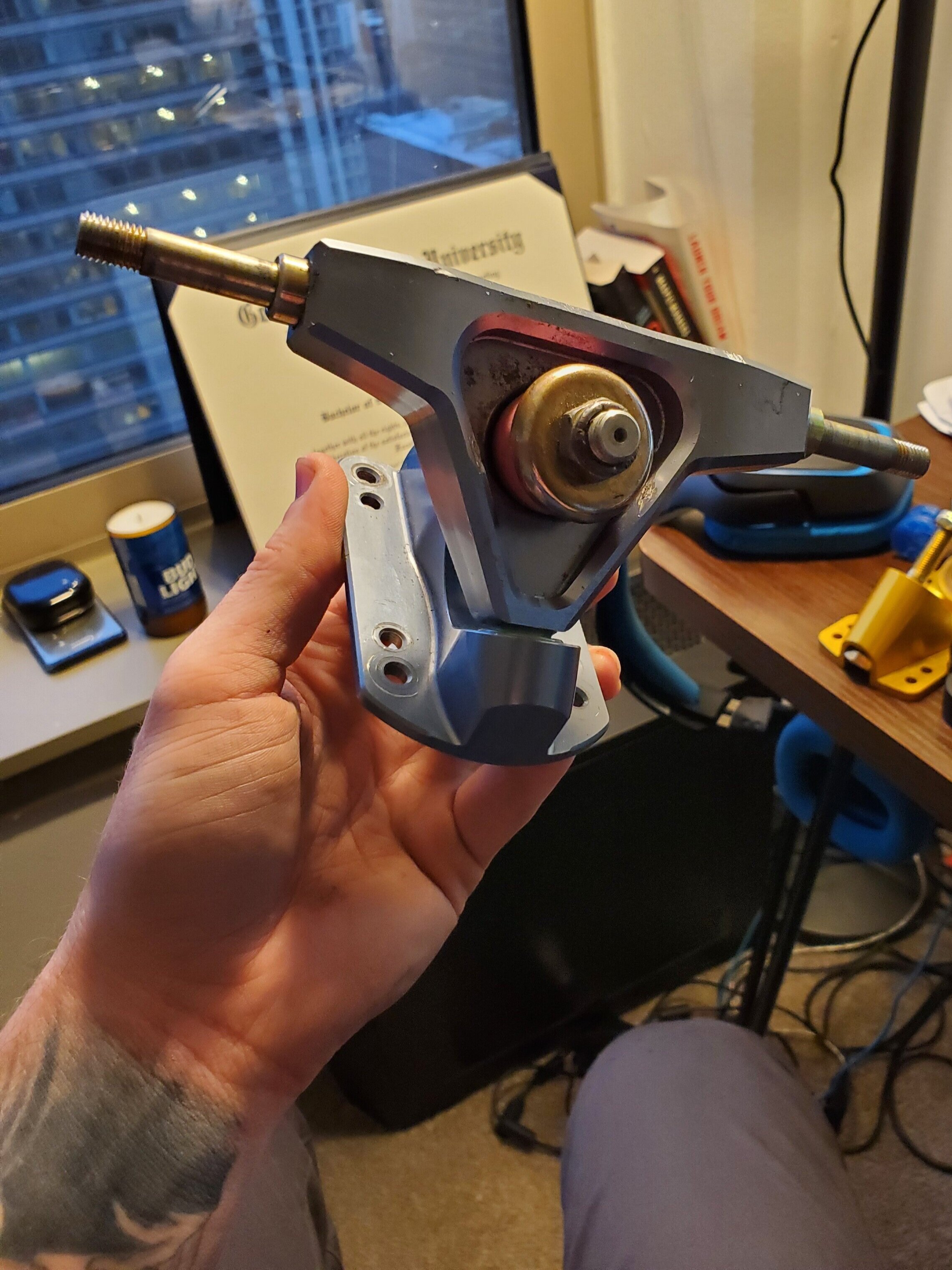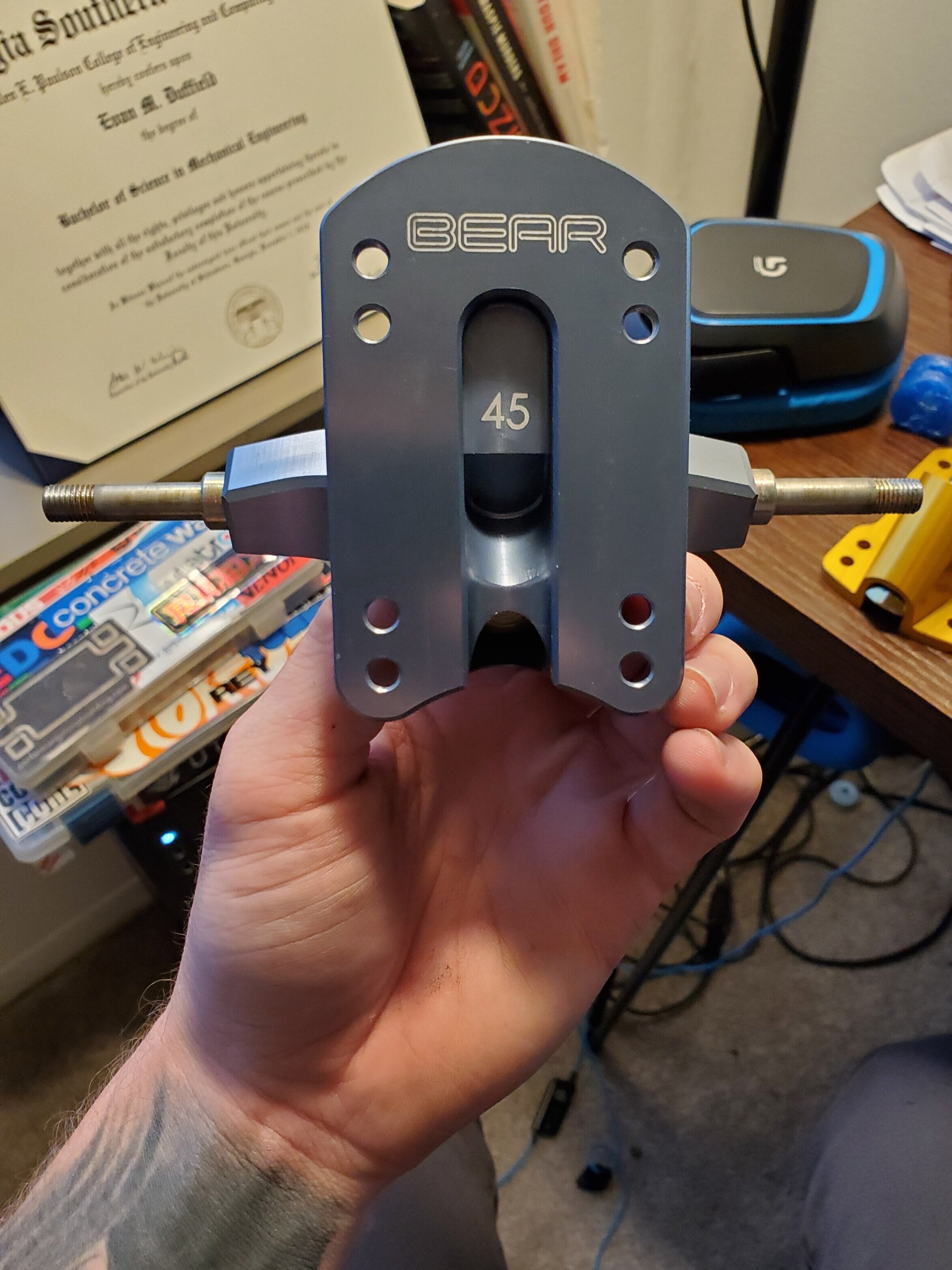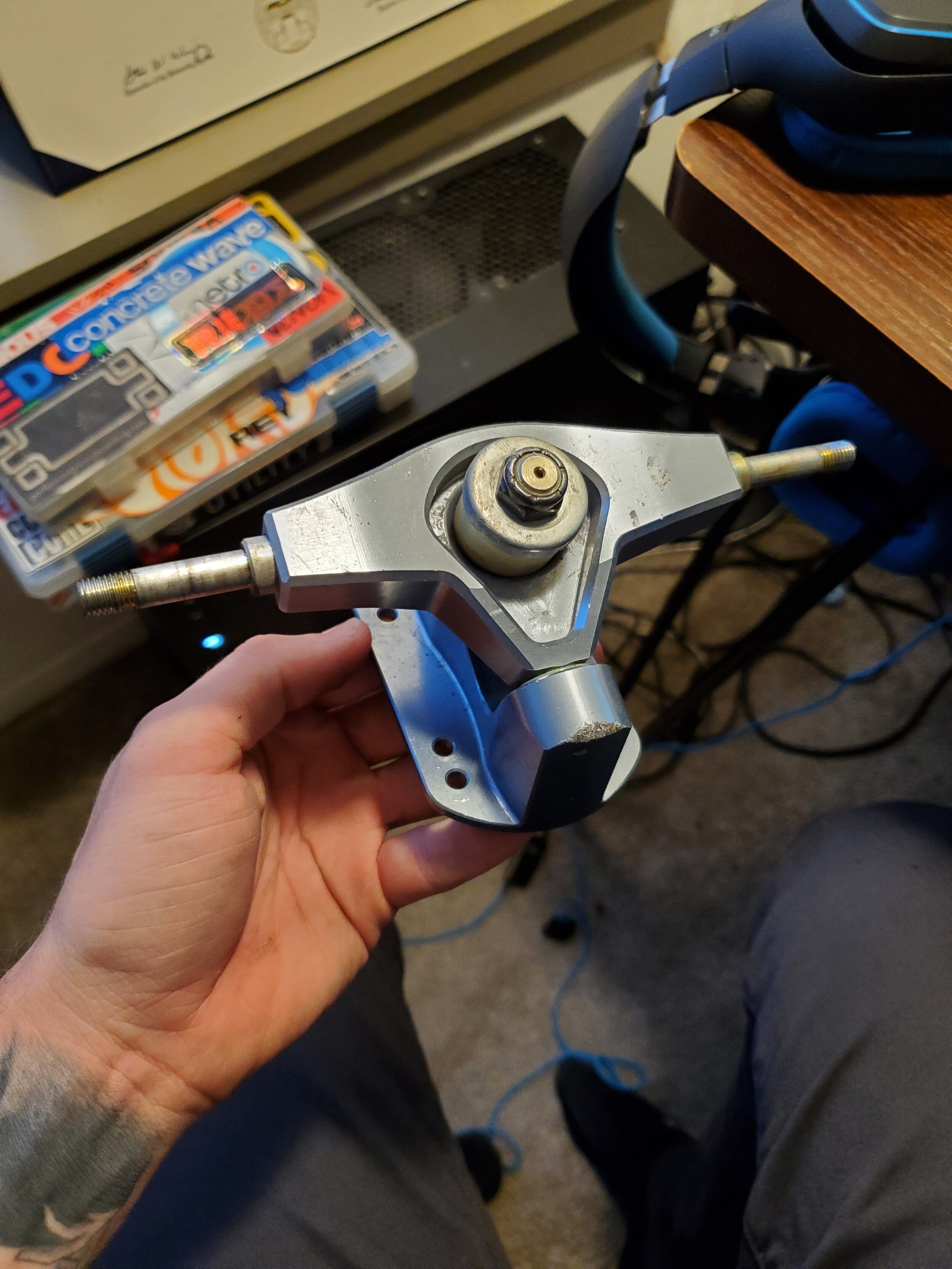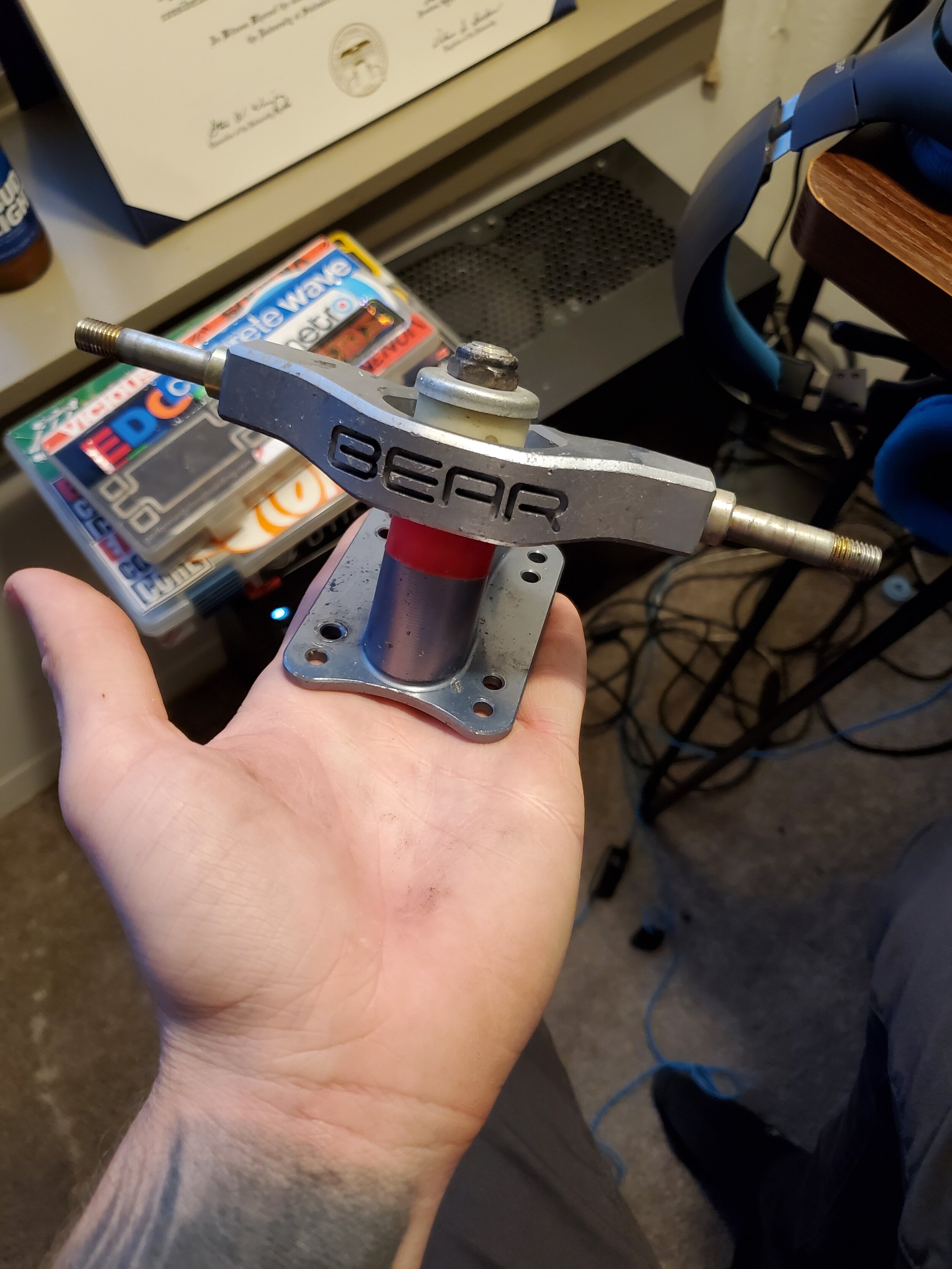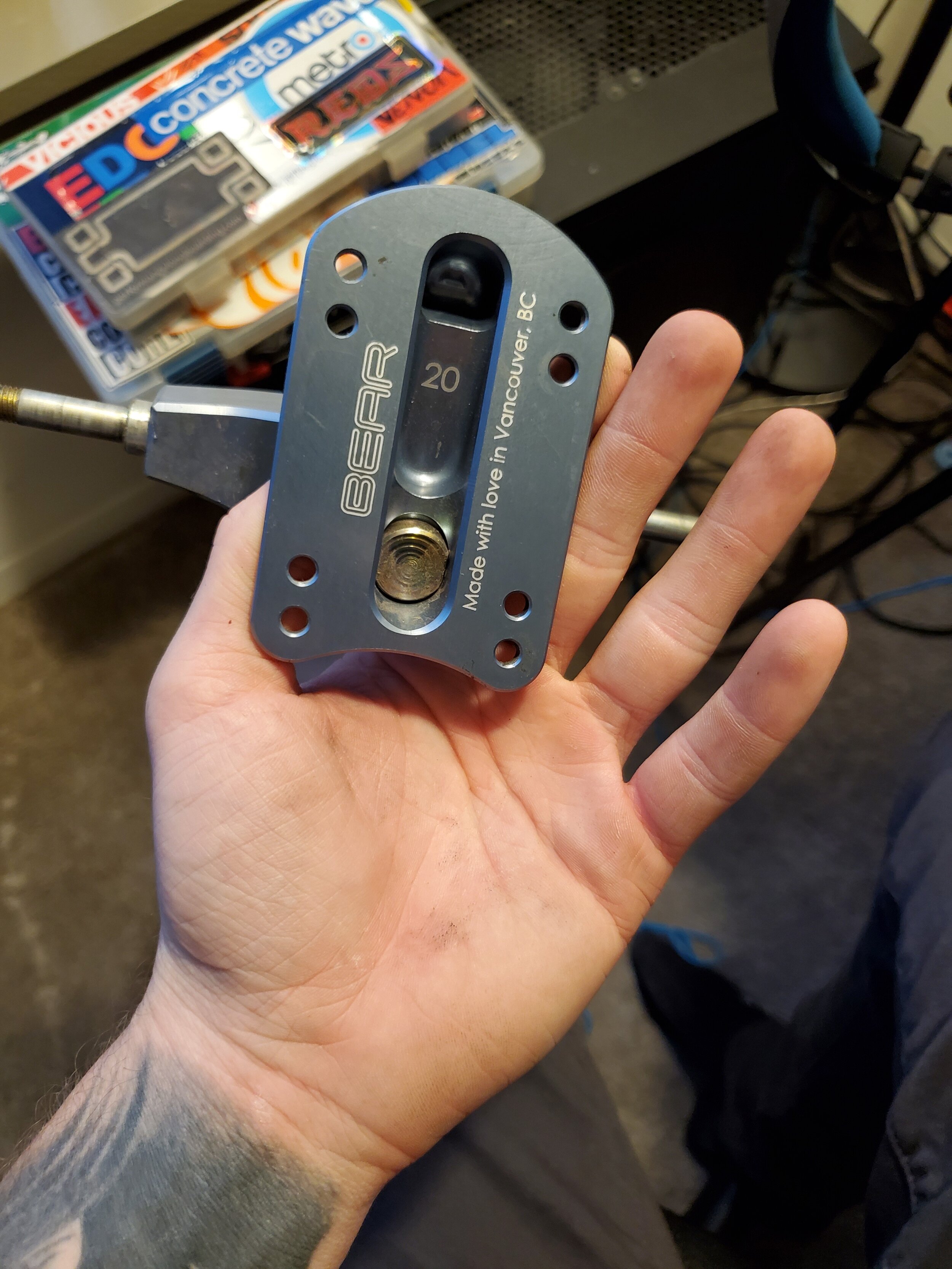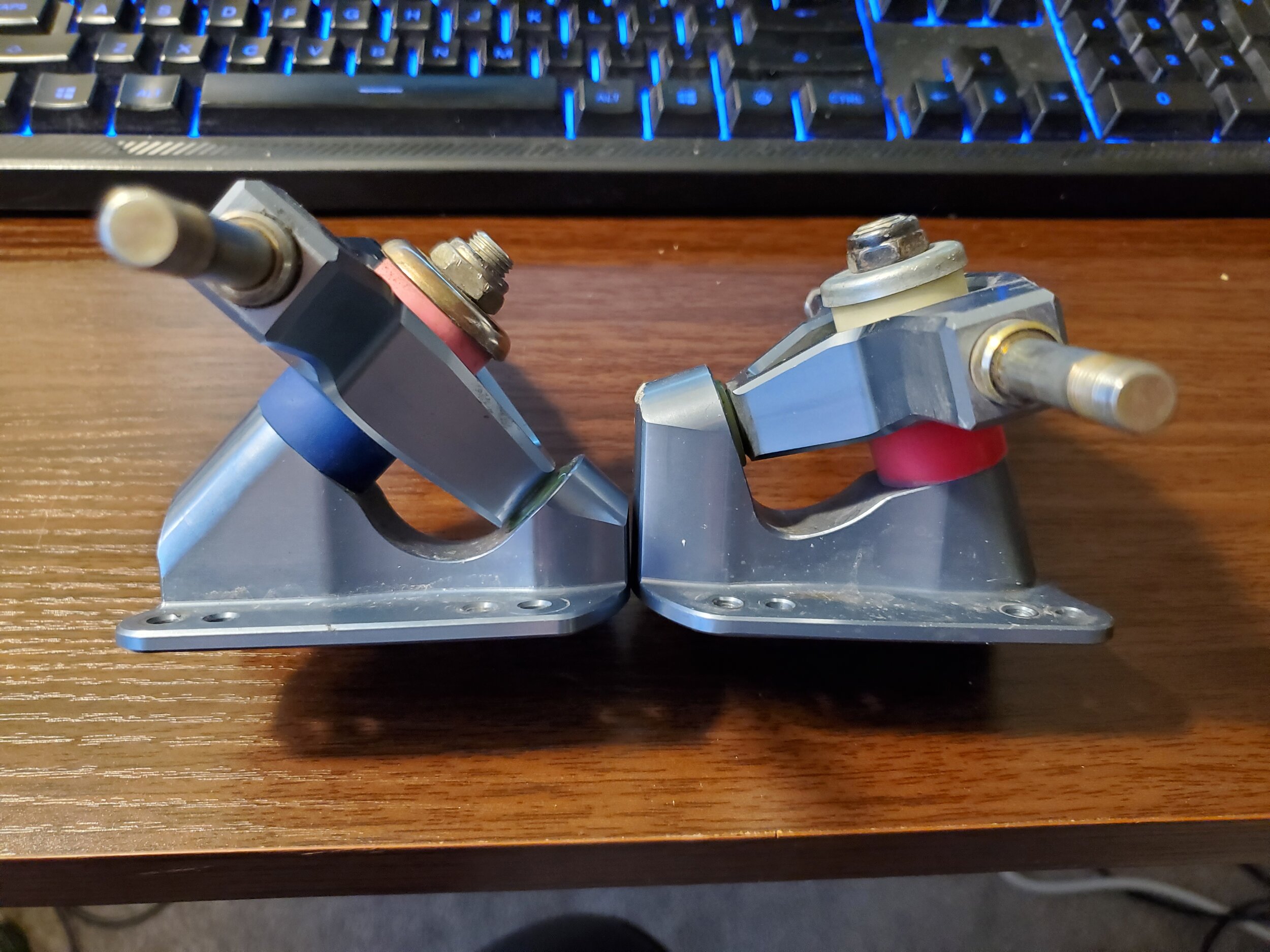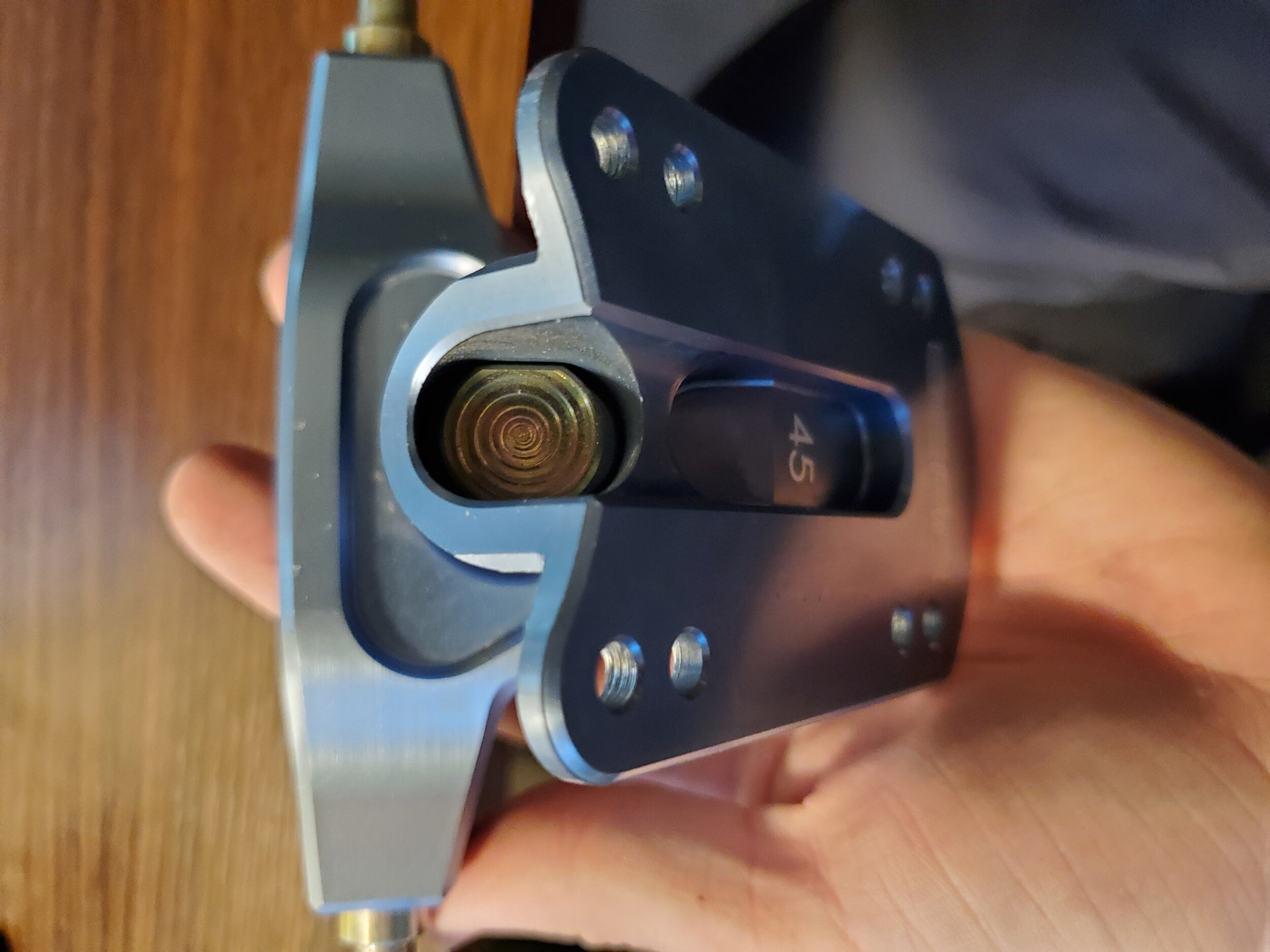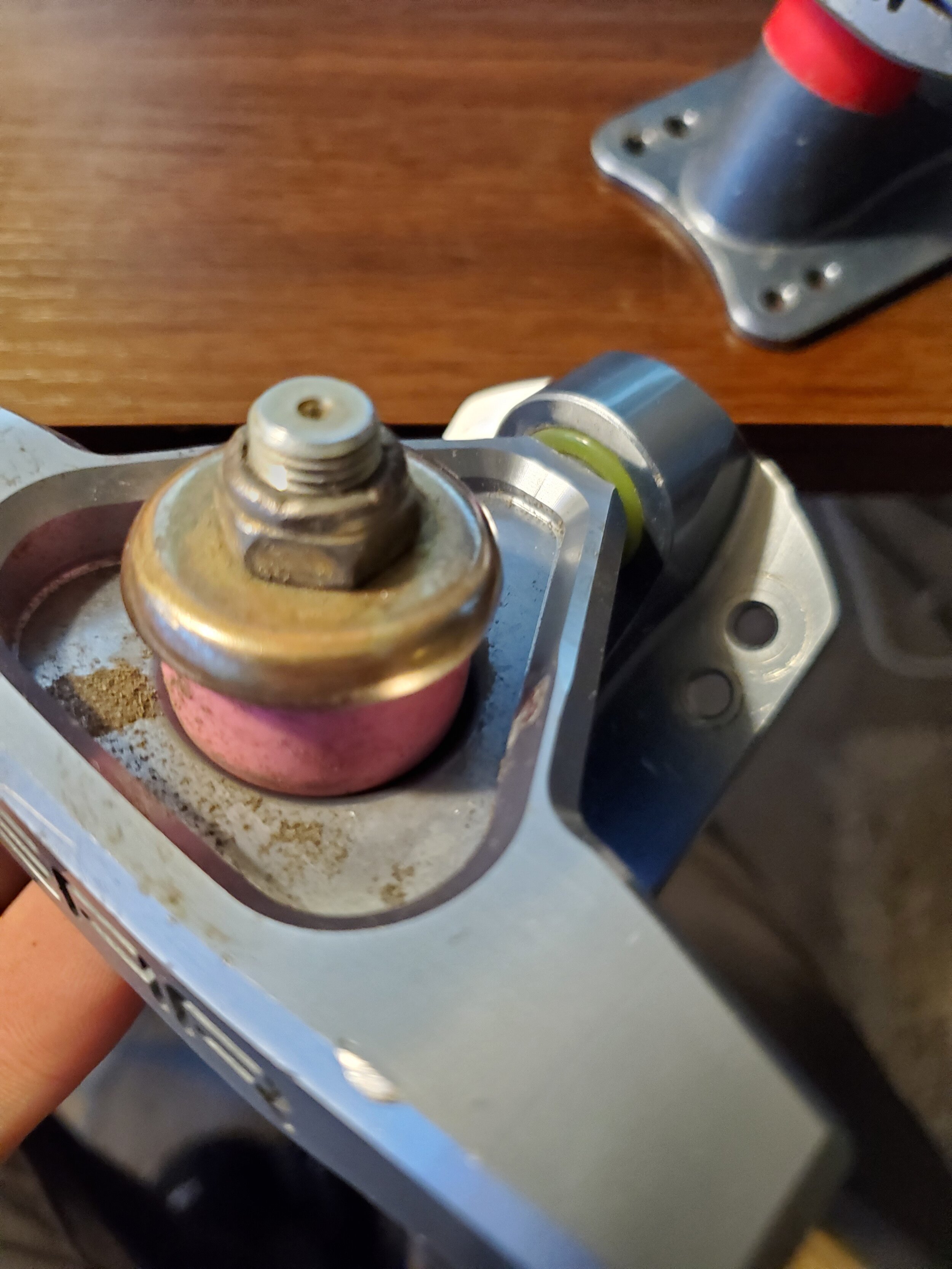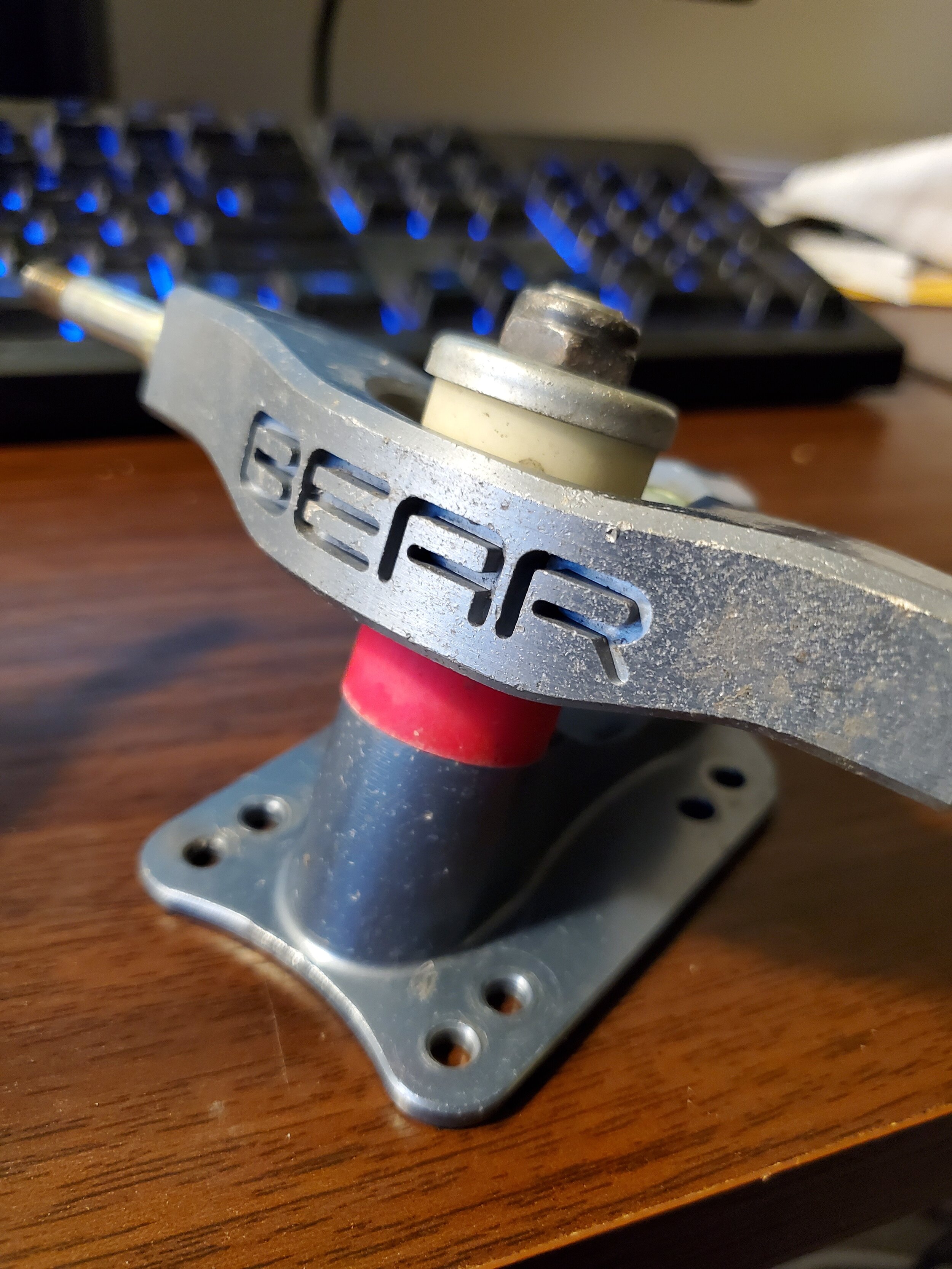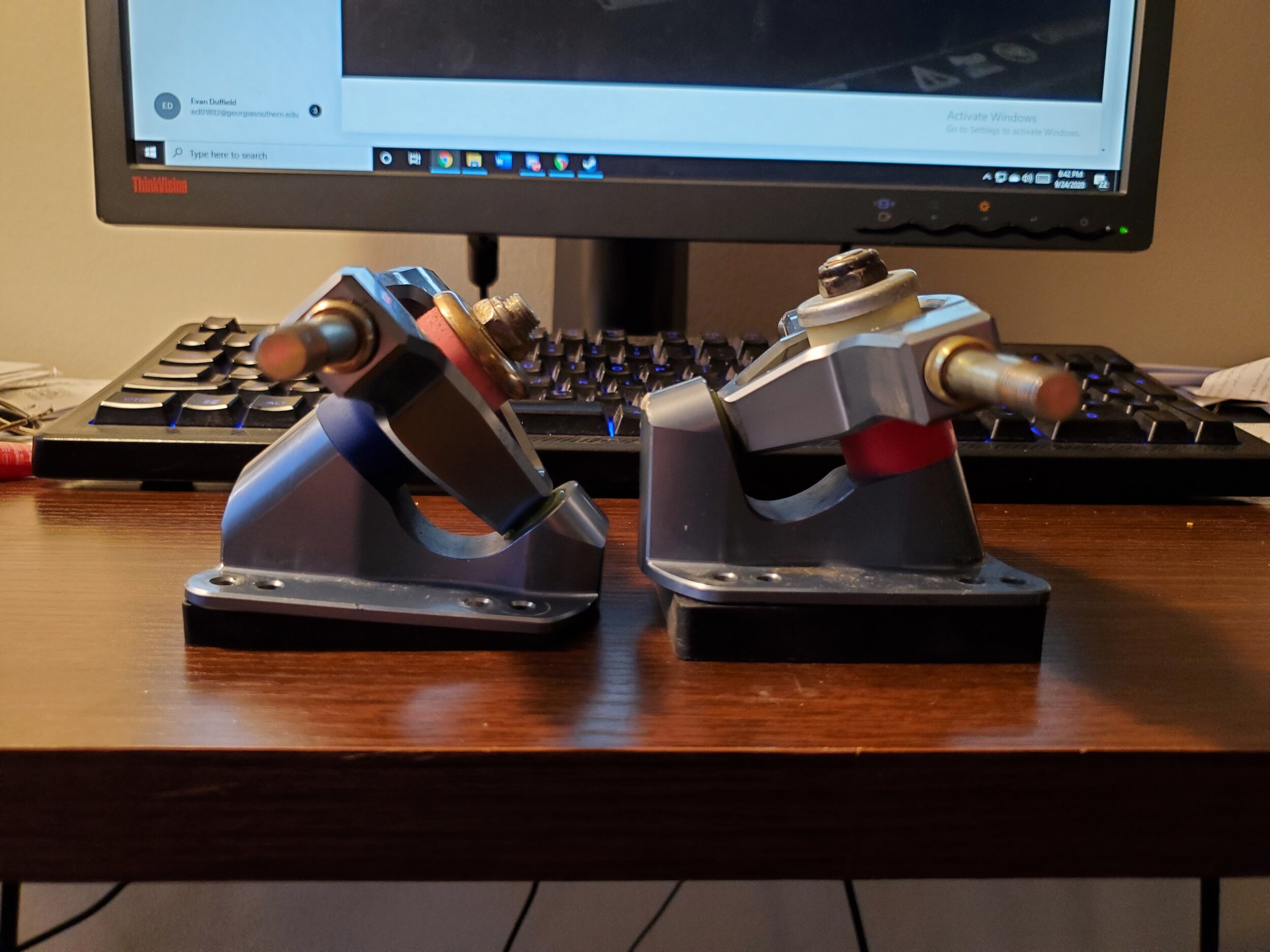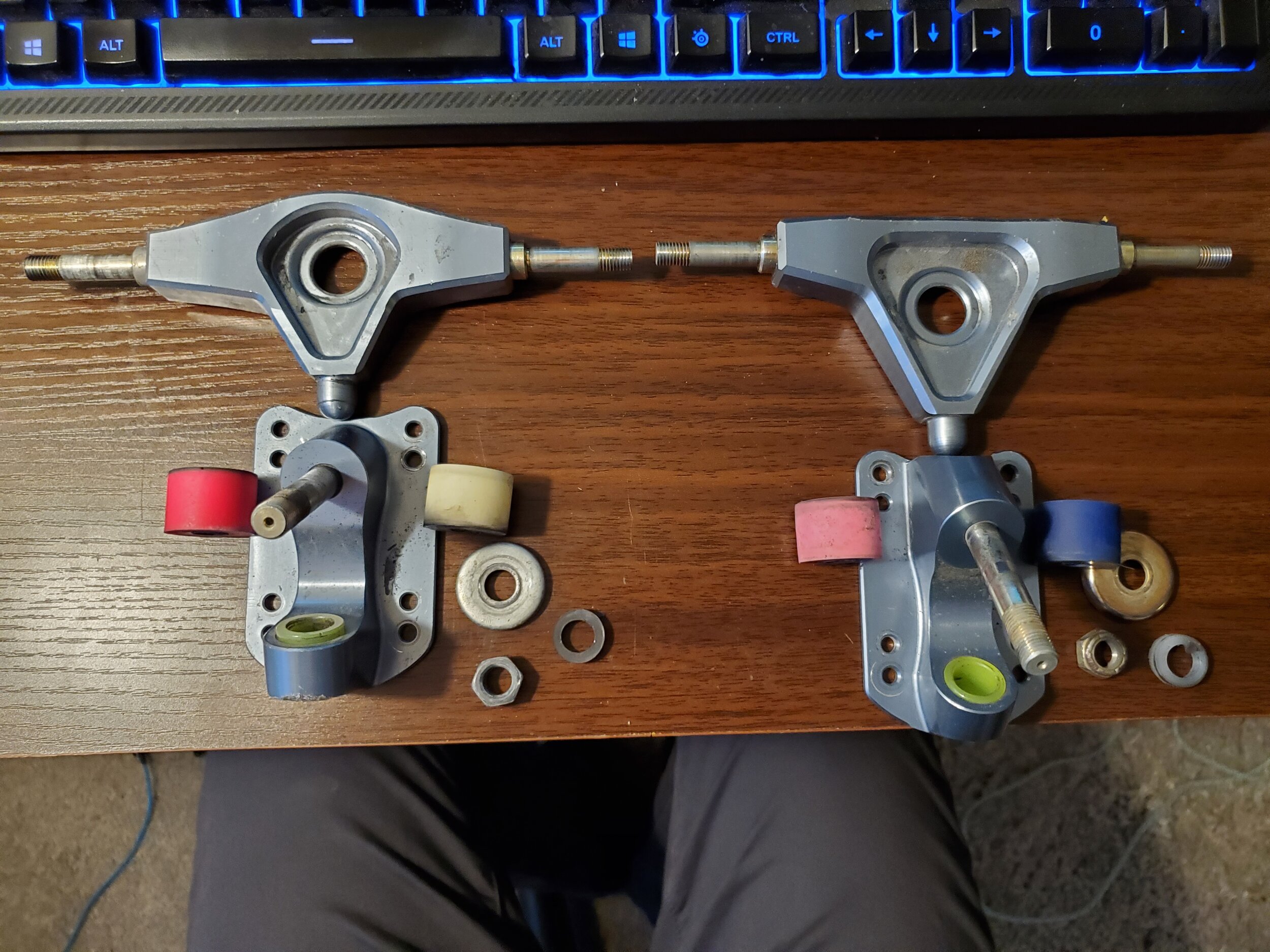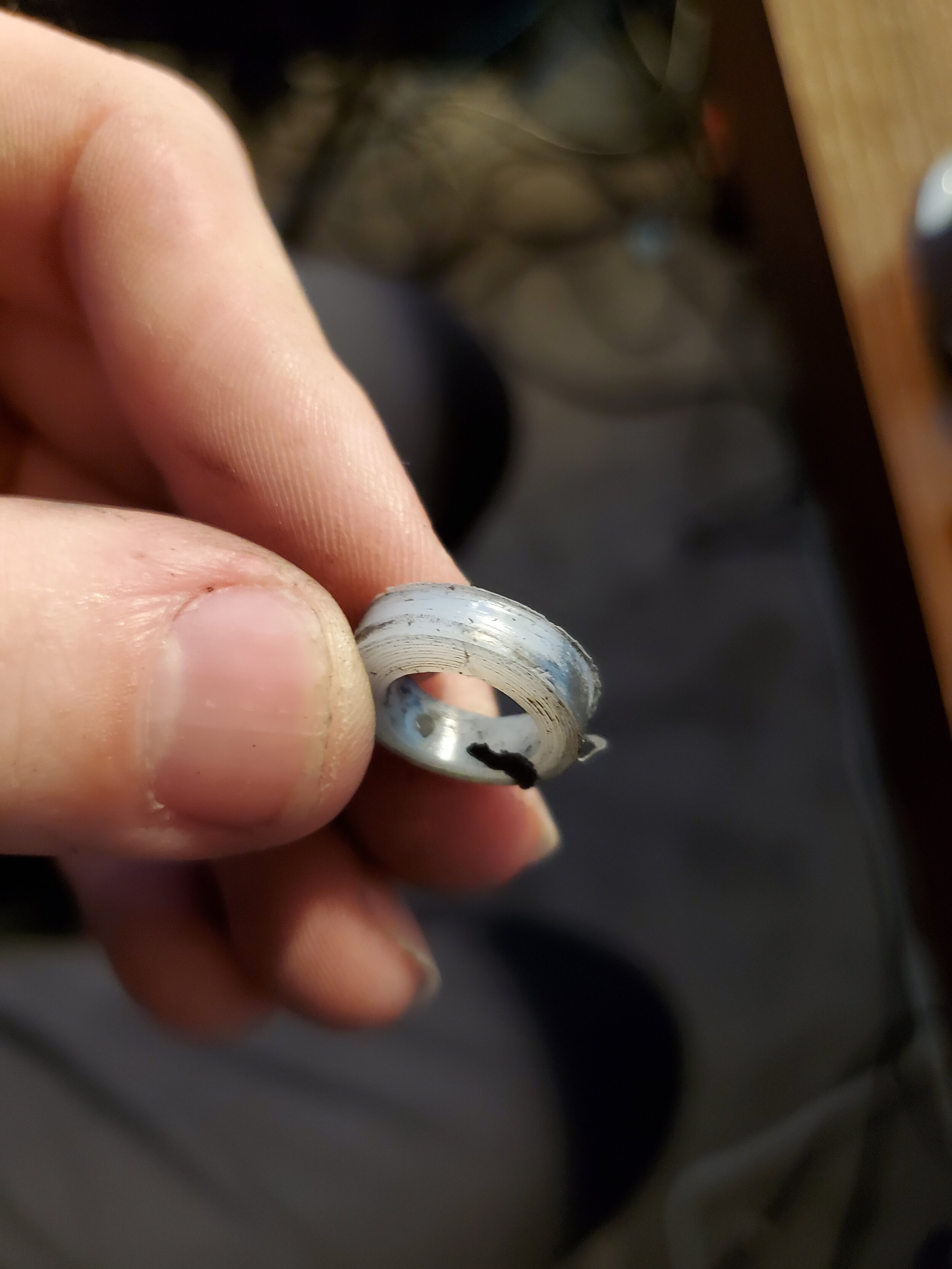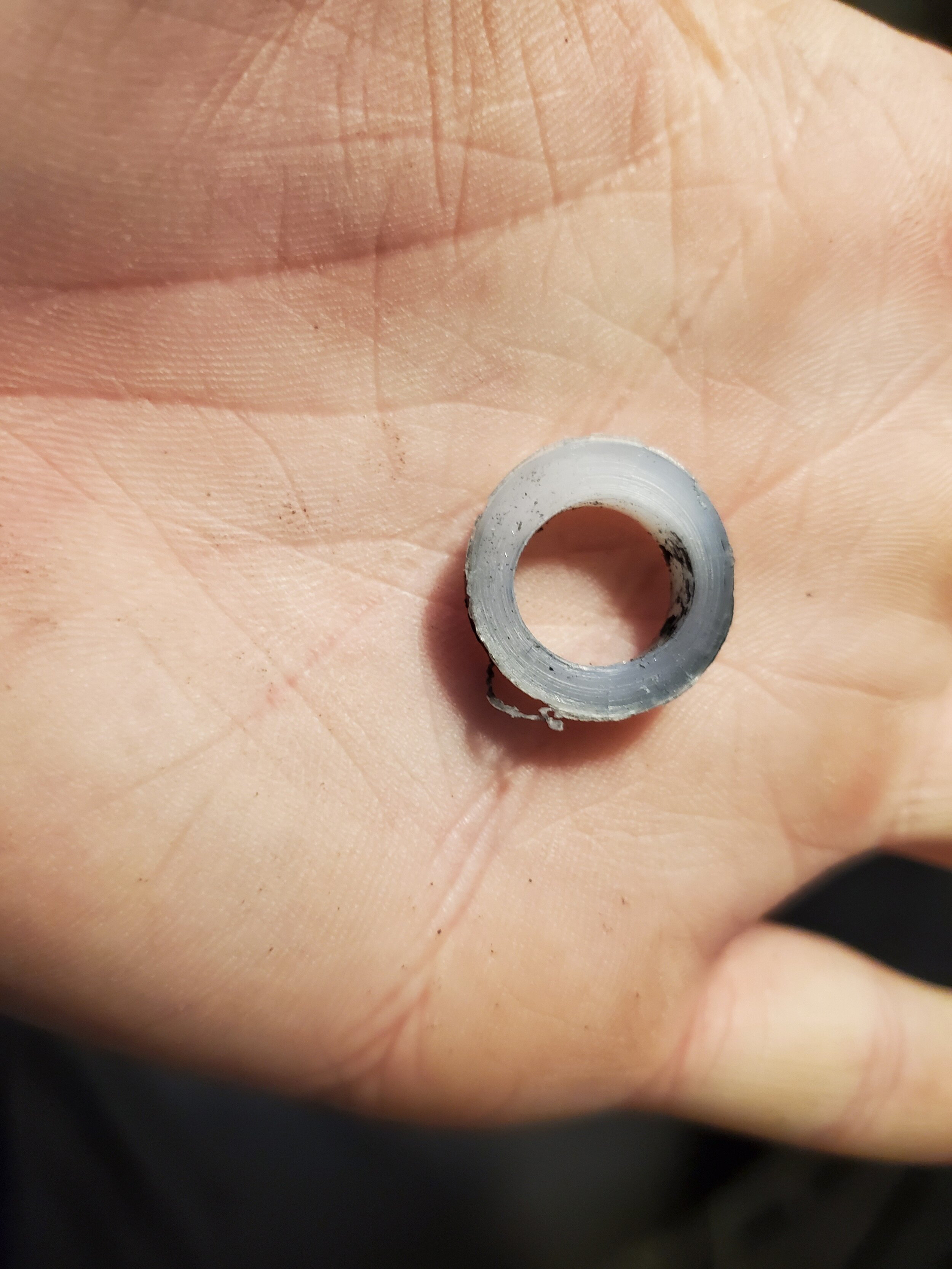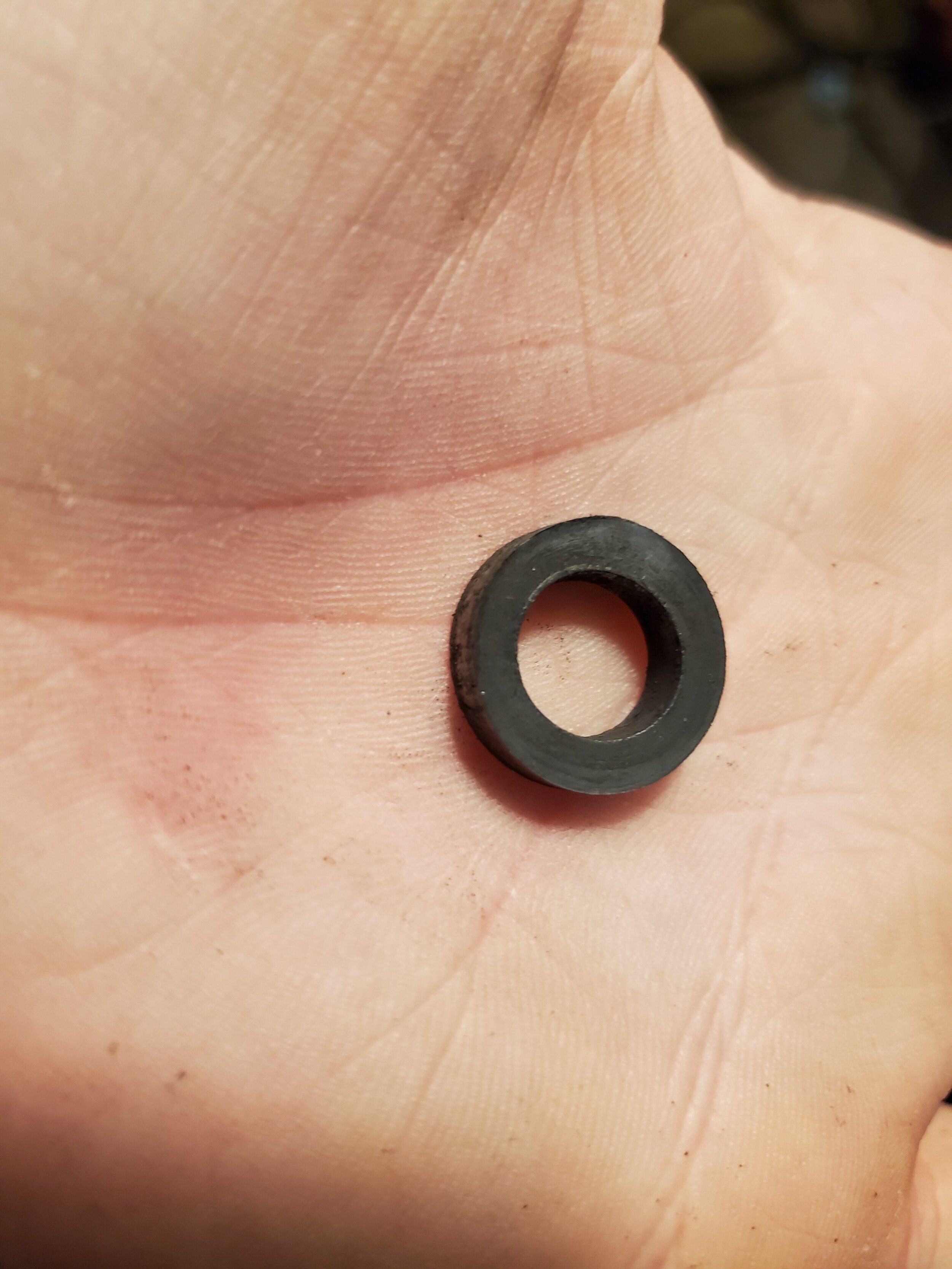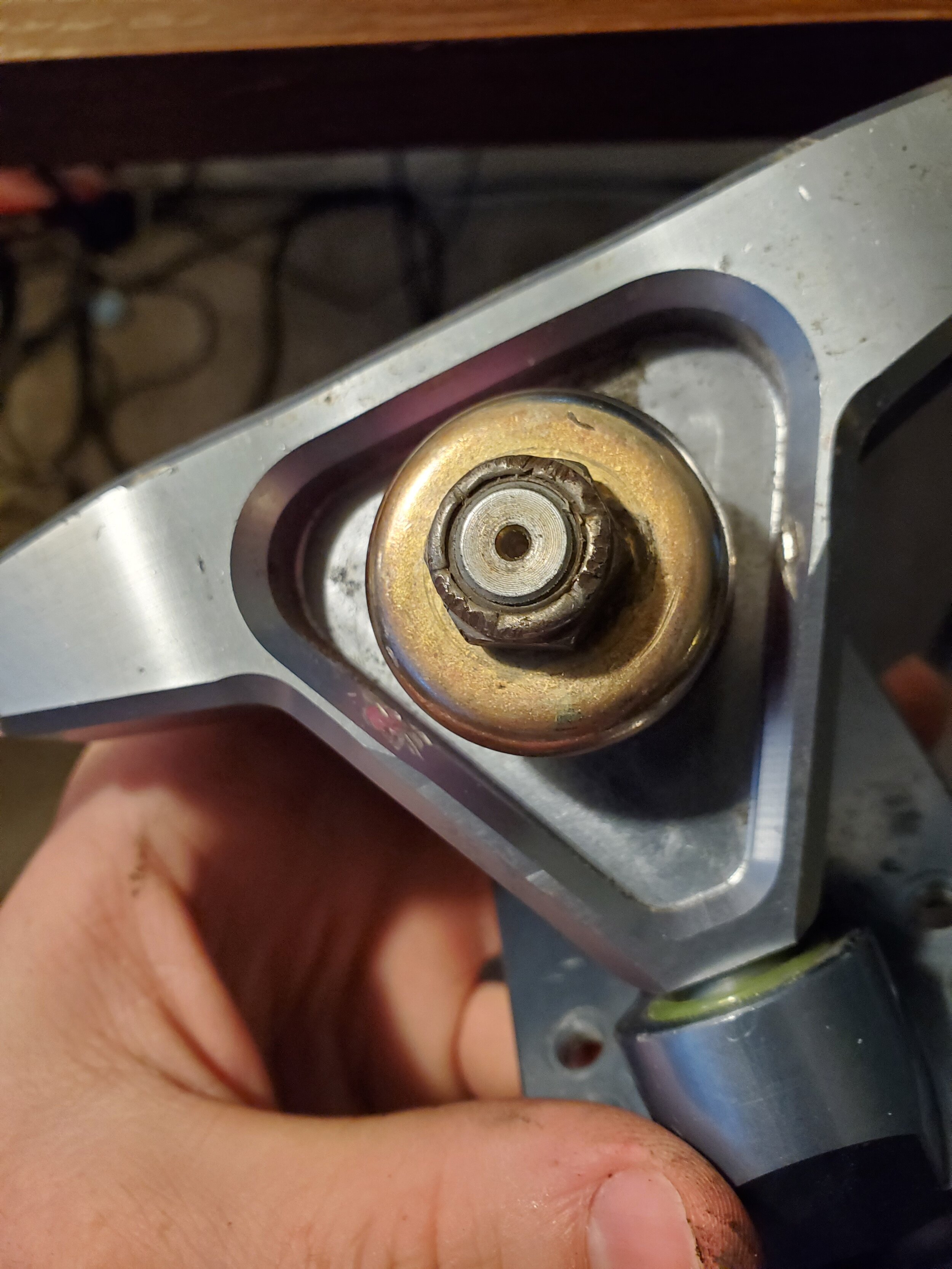BEAR SMOKIES 2020 SLALOM TRUCKS
First thing’s first, I want to give some context for this review. You can skip ahead to the details down below if you aren’t interested.
I have been skating downhill for about three years now. I only started really practicing recently, maybe about a year and a half ago. Before that I was more into dancing and board making and bombing random hills. I recently made the switch from 180mm split angle cast Rogue trucks to these Bear slalom style trucks. I have been asked a lot of repeat questions and since these are relatively new trucks, I figured I would make my version of a review.
Running through some features of these trucks:
Width: 120mm
Style: Reverse Kingpin Slalom - billet machined aluminum
Color: Grey or Red
Baseplate Angle: 45deg Front and 20deg Rear
Bushings: Tall Barrel REAR: 95a/97a FRONT:73a/78a
Rake: 7mm both front and rear
Price: $400 USD
These trucks perform incredibly well, they are lively and push me to the limits of my ability. They are stable at speed, and never have a sort of dead feeling that I have experienced with other trucks at low and high speeds.
Having a large split angle of 45/20 there is no lack of stability. Personally I have wedged my front truck five degrees, so I am currently running these at 50/20.
These trucks come stock with Venom brand tall bushings. Venom bushings are hailed as the brand to beat in downhill skateboarding, so when you pay for precision trucks it is nice to receive quality bushings. By opting for tall bushings instead of standard, you receive much more leaning ability. Combined with the positive rake, these trucks articulate easily and quickly.
Bear has taken a new approach to removing horizontal slop in reverse kingpin trucks with their ultra high molecular weight polyurethane insert bushing.
Horizontal slop between your hanger and kingpin is a nasty symptom of running a floating axle design. This issue has been attacked in numerous ways from Venom’s insert bushing found in all Rogue trucks, Paris’ slop stopper plastic insert in Savant trucks, Venom’s plug bushings for Caliber trucks, and Ronin uses a support pin that has the same effect.
Bear has implemented a tiny insert bushing made from the same material that slide pucks are typically made out of. You can see an image of these on the right.
These hard plastic inserts seem to work extremely well. Being a somewhat new skater, wobbles is a pretty inherent issue. On these trucks, even with them being 120mm, I have not had an issue with wobbles or bump steer at all.
The guys are Landyachtz and Bear tested out some hard urethane versions of this plastic piece, but found that it was too small to be effective and ended up breaking.
The only negative that I can see with these hard insert bushings is that they seem to wear out a little more quickly than the Venom bushings that come with Rogue trucks. This insert on the right has been skated pretty rigorously since April of this year. It has deformed and needs to be replaced.
Currently you are unable to order these from the Landyachtz website directly, but you can order them by messaging on Facebook or Instagram or likely E-mail.
Performance due to wear is not really noticeable, but as long as you keep an eye on these inserts there shouldn’t be an issue.
The other feature to be aware of is the axle height difference of these trucks. Due to the different angles and geometries of the front and rear trucks, you inevitably end up with varied axle heights. Stock, the axle height difference is about 0.375” with the rear being lower.
After wedging my front truck to 50 degrees, I have used a 0.5” riser in the rear to get a somewhat even axle height and a 0.75" riser to get a slightly higher rear height.
Having an even axle height is not required by any means. However there are some things to be aware of when setting up risers.
Having even axle heights means your deck will sit parallel to the pavement it is on. This can be considered neutral. A neutral position means that your center of gravity on the deck will be as it is normally, and your kingpin angles from front to rear will be just as they are listed, 45/20. However, if you have a higher rear axle height, your center of gravity will be slightly shifted forward, as your deck will be statically at an angle. This can be considered a good thing as it forces more weight onto your front wheels limiting risk of wobbles. Any amount of angle your deck has will slightly vary the kingpin angle of your front and rear truck from neutral 45/20. This is not a bad thing, just something to be aware of when setting these trucks up.
It would be a neat feature if precision risers were sold with these trucks to get certain axle height offsets to take guess work out.
The last things to be aware of is the low angle accompanied with the varied rear geometry leaves you with a surface that is essentially normal to the pavement. This leads to a common trend among this style of trucks called sandblasting. If you like your trucks to always look new or are interested in resale, I would recommend covering this with some sacrificial material. The other area that will likely see some damage is the sides of the bushing seat on the front truck.
Overall these are my new favorite trucks. I can’t recommend them enough. I am writing this “review” for free, and have no outside influence.
I truly love how these trucks perform and how much they have accelerated my skills as a skater. If you are looking to improve your downhill skills, or are a more experienced skater looking for something to try, I recommend picking up a set of 2020 Bear Smokies.
This isn’t a super in depth review, but I am hoping it helps some curious folks get a better look at the trucks. I have a gallery of some more images below. Enjoy my smartphone images.
Last note is that the rear baseplate mounts are countersunk, but the front baseplate mounts aren’t. I don’t really understand a purpose behind this, but if you wanted to know.
Evan Duffield
You can watch some a mediocre tuna run on these trucks below as well.






